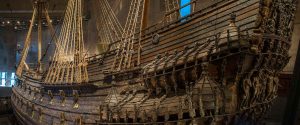On September 15, 1959, the US Army launched a test missile with the potential to travel nearly 4,000 miles. This so-called Jupiter missile took off from Cape Canaveral almost exactly 10 years before Apollo 11 lifted off at the same site (Wade 2019, 13). But unlike the rocket that put the first humans on the moon, the Jupiter missile (Figure 1) had an ill-fated launch. The failure of a connection joint 13 seconds after takeoff meant that the rocket’s final resting place was in a crater that formed just a few hundred feet from the launchpad inside of a Western Florida beach (Penders 2012, 235).

Figure 1:
The ill-fated Jupiter AM-23 missile shortly before takeoff in September 1959. Source: US Army Website, http://www.redstone.army.mil/history/archives/jupiter/jupiter_am23_16sep59_01.jpg
The physical impact and the potential cultural ramifications of the failed missile launch were largely ignored at the time. More than 80% of the rockets launched at Cape Canaveral failed during the 1950s, and the government simply continued its launches, with more than 30 missiles launched in 1957 alone (Wade 2019, 13). The Jupiter AM-23’s fragments were quickly cleared from the crater site, and apart from an environmental investigation in the 1990s, the crater has been largely ignored ever since (Penders 2012, 235-237). However, in 2012, archaeologist Thomas Penders undertook a surface survey of the crash site, determining which missile caused the crash and offering further insight into the less-documented legacies of the space race.
Penders’ initial goal was to rediscover the crater, a structure that had not likely maintained its original form due to its proximity to the Florida coastline. He used an aerial image from 1960 as a reference for the crater’s position (Figure 2) and loaded the image into a GIS that helped his team locate the crater without needing to use a grid-based surface survey (Penders 2012, 234).

Figure 2: Aerial photograph from 1960 showing missile impact crater. Source: US Air Force (cited in Penders: Aerospace Archaeology, p. 233).
The area around the crater contained 412 artifacts from several different launches, including debris from the explosion of a Delta II rocket (in addition to the Jupiter missile Penders was interested in). But typological analysis allowed Penders’ team to distinguish between the two rockets; the Delta II artifacts consisted mainly of carbon-fiber sheets or foam, whereas the Jupiter AM-23 fragments were made of aluminum or steel (Penders 2012, 236). Penders’ team also documented the crater’s structure, allowing him to classify it as a vertical-impact crater and rule out several of the rocket launches with more haphazard flight paths that could have formed the crater.
Penders’ rediscovery of the Jupiter missile crater is an important and necessary step towards telling the full picture of the history of the space race. For every successful rocket that launched humans closer to the moon, there were another seven that crashed and burned, leaving holes in the landscape and wildlife of the area. While the US government may keep its records of failed launches largely hidden from the public, the mark they made on the American landscape and history will remain, left in the hands of archaeologists to uncover what has been left out of our historical narratives.
References
Penders, Thomas. Aerospace Archaeology and the Study of Missile Crash Sites: An Example From the Jupiter Crash Site (8BR2087), Cape Canaveral Air Force Station, Brevard County, Florida. 2012. DOI.org (Datacite), https://doi.org/10.48512/XCV8458233.
Wade, Mark. “Jupiter IRBM,” 2019. http://www.astronautix.com/j/jupiterirbm.html.
Further reading
Jupiter Missile (May 31, 1957). Accessed December 2, 2022. https://www.youtube.com/watch?v=eZmJGSpelMQ.
Darrin, M. Ann Garrison., and O’Leary, Beth Laura. On the Nature of the Cultural Heritage Values of Spacecraft Crash Sites in Handbook of Space Engineering, Archaeology, and Heritage / Edited by Ann Garrison Darrin, Beth Laura O’Leary. Advances in Engineering (Boca Raton, Fla.). Boca Raton: CRC Press, 2009.


